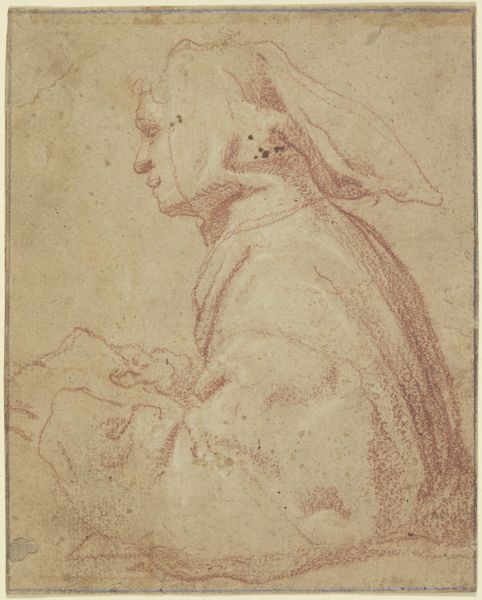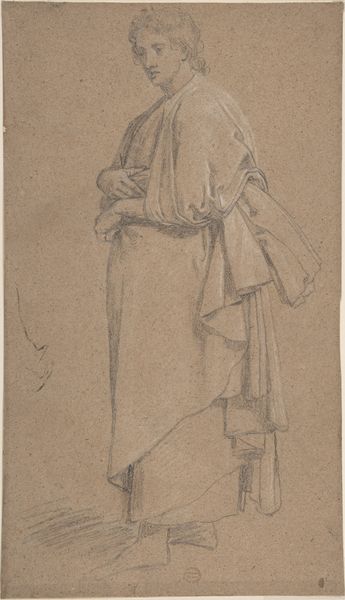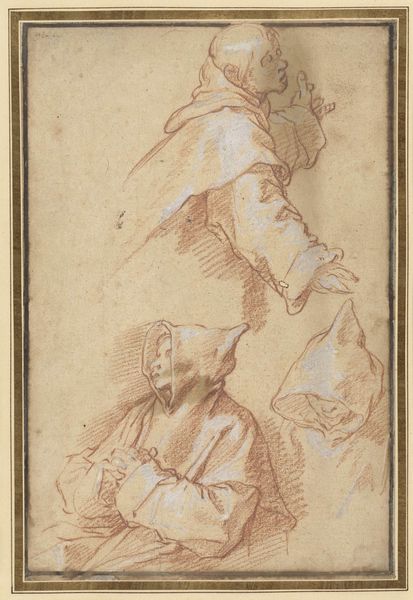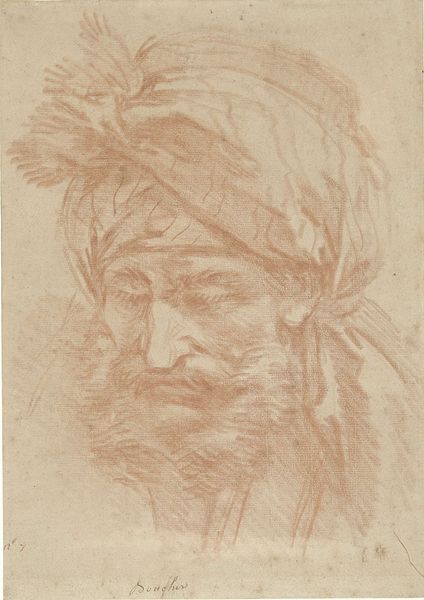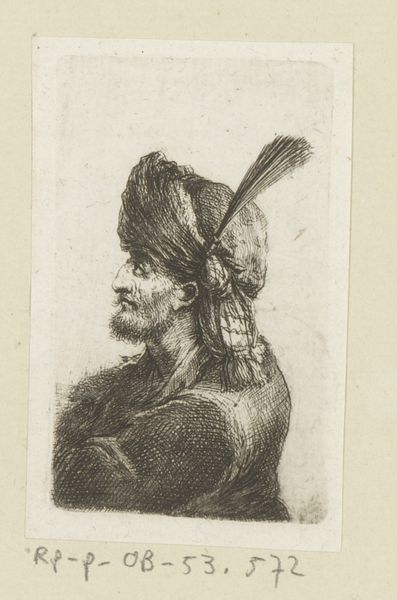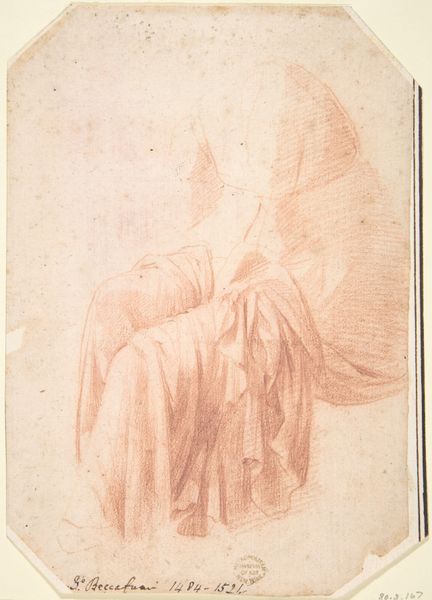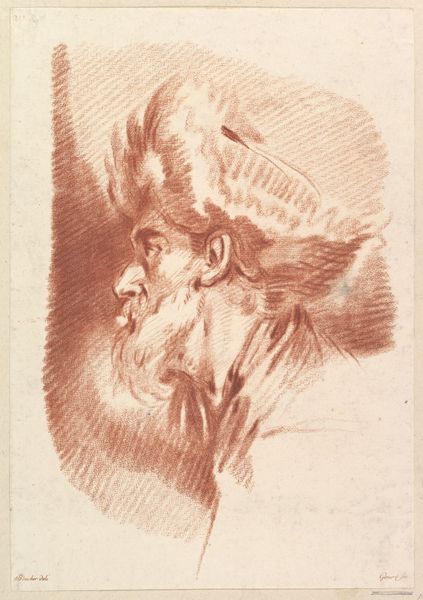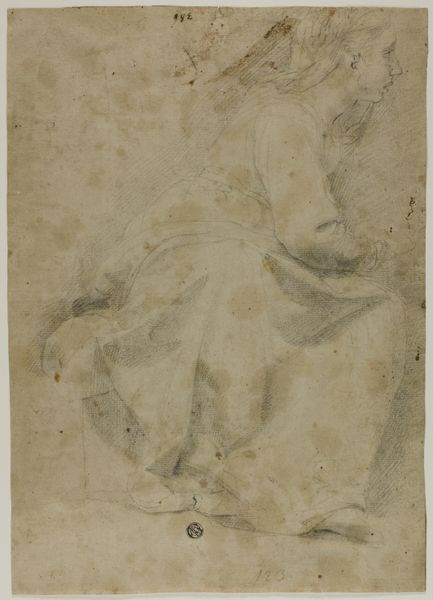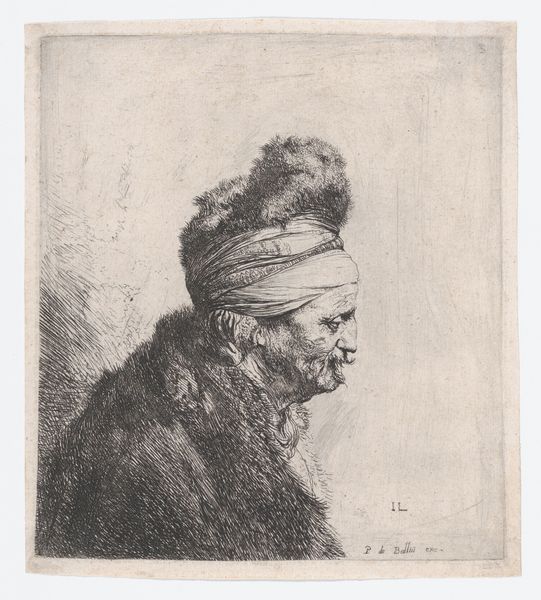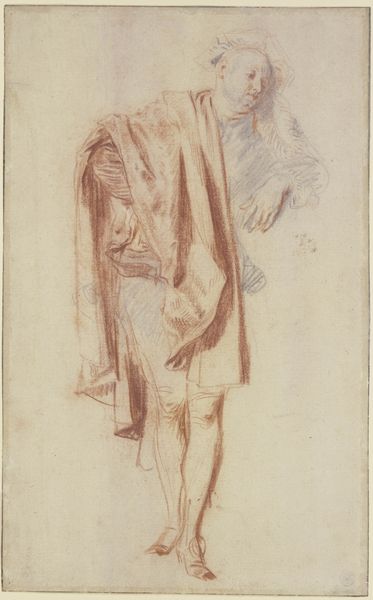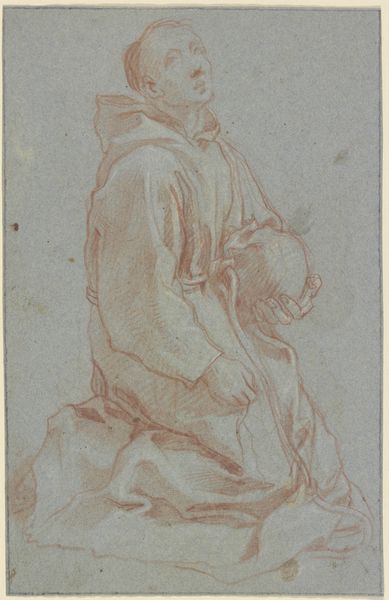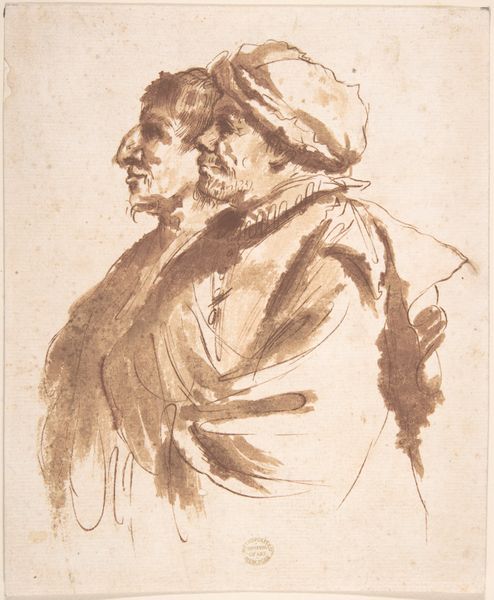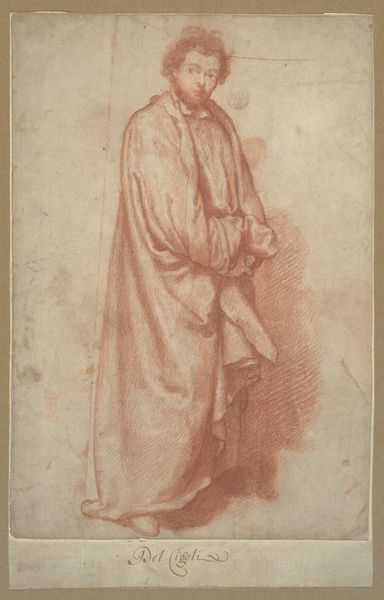
drawing, paper, pencil
#
portrait
#
drawing
#
mannerism
#
figuration
#
paper
#
form
#
pencil
#
line
#
italian-renaissance
Dimensions: 11 1/8 x 7 5/8in. (28.2 x 19.4cm)
Copyright: Public Domain
Editor: Here we have "Head of a Warrior," a drawing by Cavaliere d'Arpino, dating from around 1597 to 1601. It's rendered in pencil on paper, and something about the reddish tone and the dynamism of the lines gives it this incredible sense of energy. What can you tell me about this piece? Curator: Consider the physical act of producing this drawing. The artist, Cesari, painstakingly applying pencil to paper. How does the *type* of paper, its texture, its very production, influence the final image we see? Did he prepare it in any special way? And the pencil itself, from where did the materials originate, who processed them? This drawing isn't just an isolated act of artistic genius. Editor: That’s a very interesting perspective. I hadn't thought about the pencil’s manufacturing. So, it’s all tied into broader economic and industrial systems of the time? Curator: Exactly! Think about the warrior depicted. What social structures, what modes of production sustained such a figure? And, to take it further, this isn’t just *a* head. It is the head *of* a warrior: for *what* or *whom* does this warrior toil? Is this a glorification or, possibly, an assessment of labor? Mannerism valued artifice. It might follow that even here, in the rendering itself, we find a social commentary embedded in the art-making process. Editor: So by looking at the materials and the processes involved, we are actually uncovering deeper meanings. I see that now! Curator: Precisely! The creation and consumption of art are interwoven with broader societal structures and economic forces. Every mark is a record. Editor: I’ll certainly be taking a closer look at materiality from now on. Thanks for that shift in perspective!
Comments
No comments
Be the first to comment and join the conversation on the ultimate creative platform.
